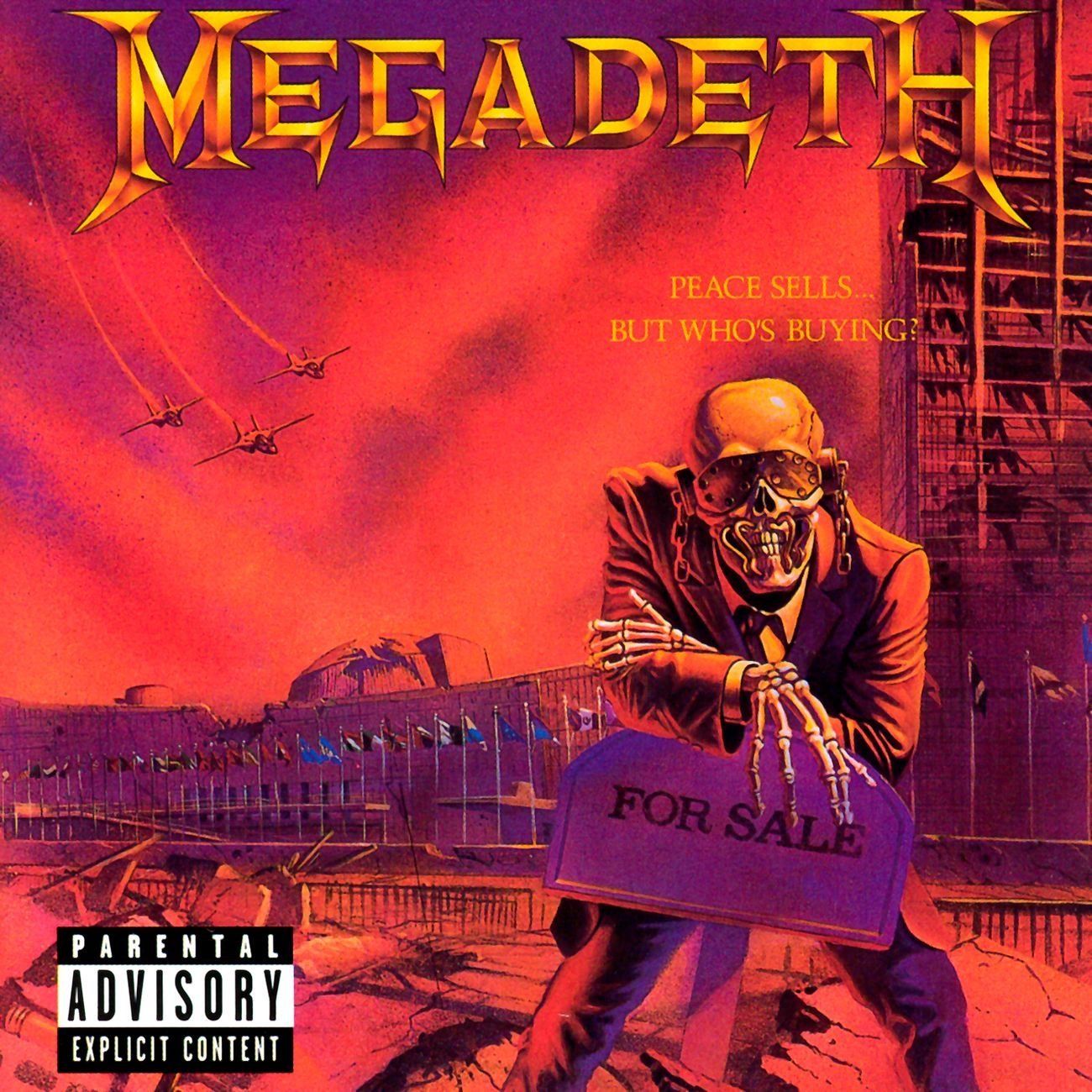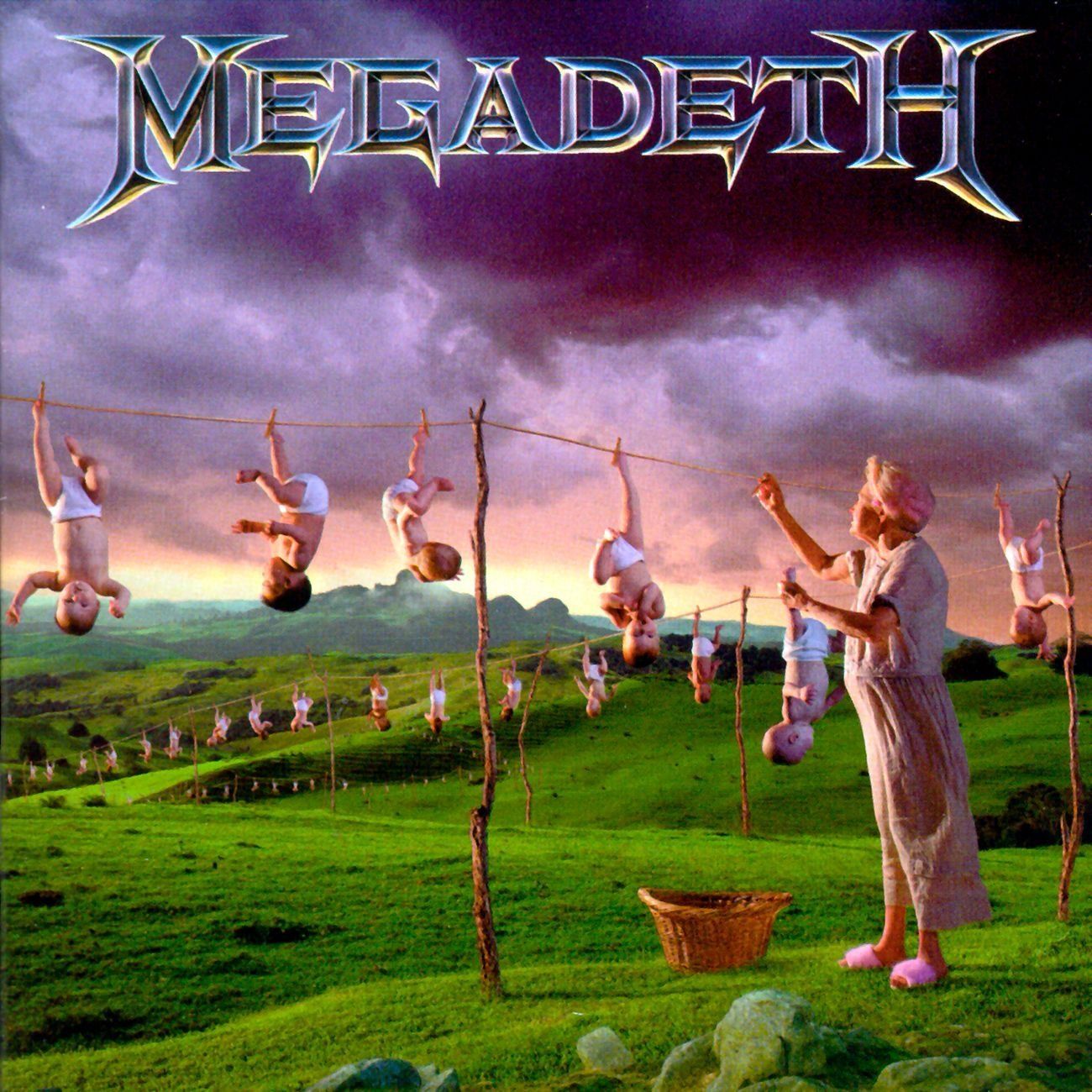Last month we dove deep to explore the importance of cover artwork, namely through our analysis of two excellent pieces of artwork adorning the latest Caligula’s Horse records. This time we take a closer look at the covers of thrash titans Megadeth, starting with 1986’s iconic Peace Sells… but Who’s Buying? Given its political nature, context is crucial to understanding the artwork and it was created during the latter stages of the Cold War, amidst escalated tensions between the world’s two foremost superpowers of the time, the USA and the Soviet Union/USSR. The world in this period of history was, at times, on the brink of a nuclear third world war, and it was only knowledge that such a cataclysmic event would bring about the Mutually Assured Destruction of both sides which prevented such horrors from occurring. Unfortunately, in the world of Megadeth, that appears to be exactly what has eventuated. Their undead mascot, Vic Rattlehead, stands before a United Nations headquarters lying in ruins, the shades of red and blue depicting a sky ablaze, fires raging in the background. The scene is reminiscent of a nuclear holocaust as three military jets fly menacingly towards the foreground, seemingly scanning the area for any remaining targets, any last vestiges of life. Such themes are undeniably heavy and unsettling in nature, so it should come as no surprise that similarly unsettling motifs have been woven into the record’s music and lyrics as well.

(Illustrator: Ed Repka)
The obvious starting point to our analysis is the all-time classic ‘Peace Sells’. The track emphatically states that peace is nothing more than a commodity, an item which can be easily traded, bought or sold. It is not some idealistic notion to be strived for, but an easily attainable state of the world which the world’s powers manipulate for their own gains. The UN was created following World War II, to bring peace and prevent such atrocities from reoccurring, yet it was powerless to prevent the numerous proxy wars which occurred throughout the Cold War in Asia, the Middle East, South America and elsewhere. Ironically, rather than bringing about peace of any kind, the UN merely served as another theatre of war, this time a political one, in which the antagonistic forces of the US and USSR could engage with one another. The UN headquarters have been annihilated in the illustration, yet that doesn’t stop Vic, dressed as a real estate agent, from looking to sell what’s left of it. One might argue that this would be a tough sell, that Vic is as likely to find a buyer for the rubble as the UN was to find a buyer for world peace. Further still, the fact the UN is on the market at all suggests that, despite its ruined state, it will be just as (in)effective as ever, and thus it still constitutes a legitimate commodity.
Looking more broadly at the themes prevalent within the artwork, there are a host of other comparisons to be made. In particular we can cast our minds to the numerous tracks dealing with the occult, beginning with the eerie fan favourite ‘The Conjuring’. Thematically, the war ravaged landscape and grim colour scheme can be seen to represent hell on earth, tying in nicely with the song’s descriptions of satanic rituals and black magic. The song’s portrayal of the devil’s salesman selling yet another abstract commodity, this time the human soul, is further embodied by the figure of Vic, an interesting allegory to his purported sale of a soulless, in every sense of the word, UN. Musically, with the help of the similarly occult ‘Bad Omen’, the homicidal ‘Good Mourning/Black Friday’, the torturous ‘Devil’s Island’ and others, the album as a whole does a fantastic job of providing the illustration with a suitably ominous, disconcerting and sinister soundtrack.
Fast forward eight years and Megadeth had just released the polarising Youthanasia. Like its 1992 predecessor Countdown to Extinction, the album continued Megadeth’s transition from the lightning fast thrash which comprised their first four records, to a slower, more commercially viable sound. This radio-friendly approach, with Mustaine seeking that elusive No. 1 ranking on the charts, also saw a shift in the album artwork of the band. The undead Vic Rattlehead was no longer a permanent fixture, whilst this particular cover featured luscious, rolling green hills and cute, innocent babies, images generally associated with nature, peace and positivity. However, it’s crucial to point out that whilst their shift in sound had changed the method of their delivery, their message remained the same. Megadeth still wrote politically abrasive and, at times, downright aggressive songs, only now they were catchier, reaching a wider audience and allowing them to have a greater voice than ever before. This same duality applied to their artwork as well, the youth of their times, symbolised by the babies, being hung out to dry by the older generation, powerless to avoid the oncoming storm.

(Illustrator: Hugh Syme)
The result is arguably the most shocking Megadeth cover to date, as Mustaine issued a rallying cry, a call of arms for the youth of the ‘90s to take action and free themselves from the status quo. The dark, brooding clouds take up more than half of the image, highlighting the sheer scale of oppression to which the youth have been subjected. Furthermore, there is a seemingly endless line of babies being hung, yet there is only one elderly figure placing them there, suggesting that the oppressed far outnumber their oppressors, and that there is victory to be had in unity. Finally, the imminent storm is itself duplicitous: on the one hand, if nothing is done it will simply decimate the defenceless babies hanging limply from the clothesline; on the other hand, the revolution which Mustaine calls for will see a raging storm engulf society when the opposing factions collide. Thus, the cover of Youthanasia perfectly encapsulates the lyrics and music to be found within, just like the cover of Peace Sells… before it, as Megadeth and their collaborators prove to be yet another gift to artwork.
-KD